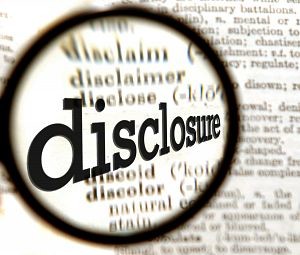Recently, a southern California contracting company was fined $28,564 for failing to comply with the EPA’s Renovation, Repair, and Painting rule while performing updates on two pre-1978 residences that contained lead-based paint. The company did not receive EPA certification, did not distribute the federally-required Renovate Right brochure, and did not make sure the contractors were doing lead-safe work. In short, they failed to take proper precautions or warn residents of potentially harmful lead particles disturbed by renovation, and they paid a heavy price.
As landlords, property managers, and contractors, you can be held liable for this kind of negligence. Disclosures are problematic, but necessary. To make sure you never end up in hot water for failing to alert tenants of potential hazards, be sure to always disclose the following:
- Lead Paint: For a lease or rental of all residential property, built before Jan. 1, 1978, the landlord must provide the tenant with a lead hazard information pamphlet, disclose the presence of any known lead-based paint, and provide a statement signed by the tenant that the tenant has read the warning statement and has received the pamphlet.
- Details on Security Deposits: Disclose use and return of the security deposit.
- Sex Offender Database: Landlords must include the following language in their rental agreements: “Notice: Pursuant to Section 290.46 of the Penal Code, information about specified registered sex offenders is made available to the public via an Internet Web site maintained by the Department of Justice at www.meganslaw.ca.gov. Depending on an offender’s criminal history, this information will include either the address at which the offender resides or the community of residence and ZIP Code in which he or she resides.” (Cal. Civ. Code § 2079.10a)
- Tenant Paying for Others’ Utilities: If a tenant is paying for gas, electricity, or other utilities that serve other areas as well as their own unit, landlords must include this information on the lease. Additionally, the lease must disclose how the funds will be allocated fairly. (Cal. Civ. Code §1940.9)
- Toxic Mold: Prior to signing a rental agreement, landlords must provide written disclosure when mold exceeds permissible exposure limits or poses a health threat. Landlords must distribute a consumer handbook, developed by the State Department of Health Services, describing the potential health risks from mold. (Cal. Health & Safety Code §§ 26147, 26148)
- Pest Control Service: When the rental agreement is signed, landlord must provide tenant with any pest control company disclosure landlord has received, which describes the pest to be controlled, pesticides used and their active ingredients, a warning that pesticides are toxic, and the frequency of treatment under any contract for periodic service. (Cal. Civ. Code § 1940.8, Cal. Bus. & Prof. Code § 8538)
- No Smoking Policy: For leases and rental agreements signed after January 1, 2012: If the landlord prohibits or limits the smoking of tobacco products on the rental property, the lease or rental agreement must include a clause describing the areas where smoking is limited or prohibited. (Cal. Civ. Code § 1947.5)
Some of these disclosures are specific to California leases, so check your local and state requirements for specific information you must include in your area.
Drafting leases is a complicated process, full of insider knowledge and required disclosures. We can help! For more information, see Avoiding Common Landlord Liabilities or contact us at 626-339-1000.






Pingback: LANDLORDS BEWARE: You MUST Disclose These on Your Leases! (PART TWO) | The Commercial Expert
Pingback: LANDLORDS BEWARE: You MUST Disclose These on Your Leases! (PART THREE) | The Commercial Expert